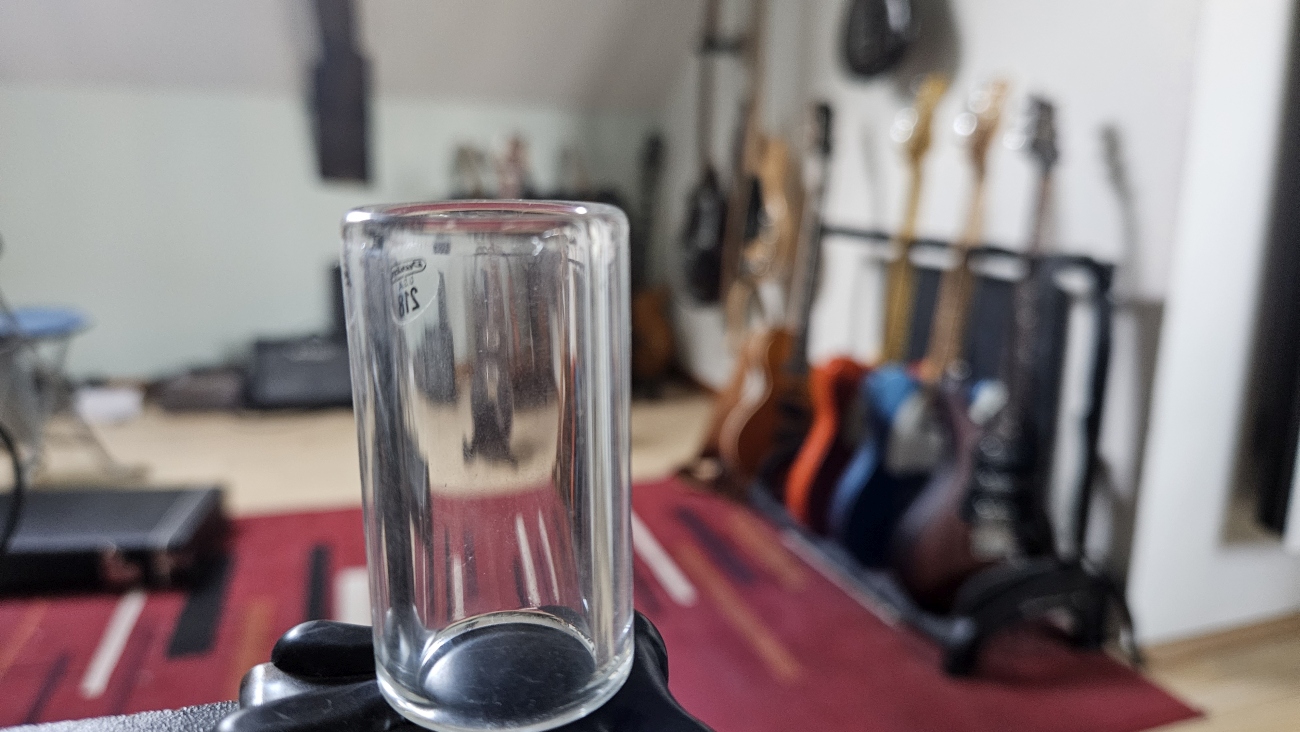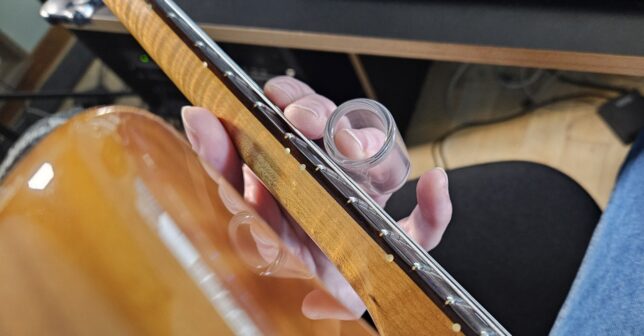Learning Slide Guitar With Allen Hinds

I have owned a couple of bottlenecks for years, but could never get into practicing slide guitar, until recently, thanks to Allen Hinds.
I guess I was convinced that you could not play slide guitar without open tunings, and I have always been too lazy to re-learn my entire fretboard with different tunings (except maybe for dropped D). Also, I like to the action pretty low on all my guitars, and I though I would have to sacrifice one of them for slide… Which I never did!
Unlocking Slide Guitar
It’s when I discovered that Allen Hinds plays all his slide guitar parts in standard tuning (and there are many in his albums) that I decided to bite the bullet and start practicing, a couple of moths ago. Also, he uses a very low action on all his guitars too, and yet he plays slide very well, so it’s possible!
Here is a video where he shares some great tips about how to play slide guitar in standard tuning. There is a lot to learn here, so it is not a bad idea to watch it a couple of times, guitar in hands!
Slide Guitar Essentials
I am still learning, but here is what I’d like to remember from this video and the first weeks of practicing:
- The key is to mute the strings properly with the right hand. While in open tuning it’s not a huge deal, in standard tuning it is a mess if you don’t. Since I mostly play with fingers it is not a big problem – just a matter of practicing and synchronizing the fingers!
- Getting the right pressure on the bottleneck takes time, especially with a low action. But it will come eventually. Guitars with lower radius works better too, so avoid vintage strats to begin with!
- Once you are able to mute the strings that you do not want to play, working on intonation is the next step. It’s like fretless guitar, if the intonation is not right you will feel seasick pretty quickly! And although the first minutes are very painful, it comes faster than you would think. It is just a matter of taking the time to practice.
- Another important thing once you get the basics is to choose the strings where to play the notes, and where you slide from / to (or do not slide at all). Sliding notes on a single string usually leads to pretty boring phrasing. Choosing which notes you slide, in which direction (up/down), and which notes you don’t is very important too.
- Knowing your fretboard is even more necessary for slide, since you tend move around much more than when playing with fingers. I am happy that I finally chose to learn the fretboard in absolute mode (knowing all notes names on every fret/string). Works even better (for me) for slide guitar.
- Using other fingers to fret notes is possible, and it definitely extends the possibilities. It is not such a big deal to learn, actually.
- I chose to force myself to avoid using vibrato on long notes at first, to avoid getting into the crazy blues player vibrato thing Allen Hinds talks about in the video. It is also a good way to practice intonation, and you can slowly add that later on anyway!
All-in-all, whatever comes out of this, practicing slide guitar is a great exercise as it opens your ears to different phrasing and melodic ideas. I am loving it!
Back to work…


